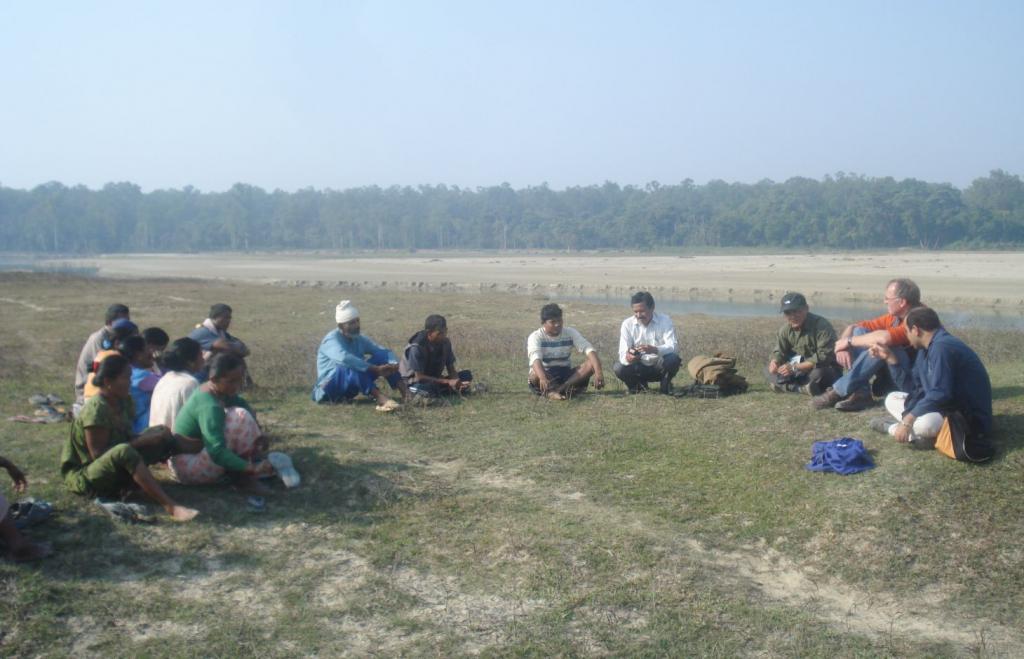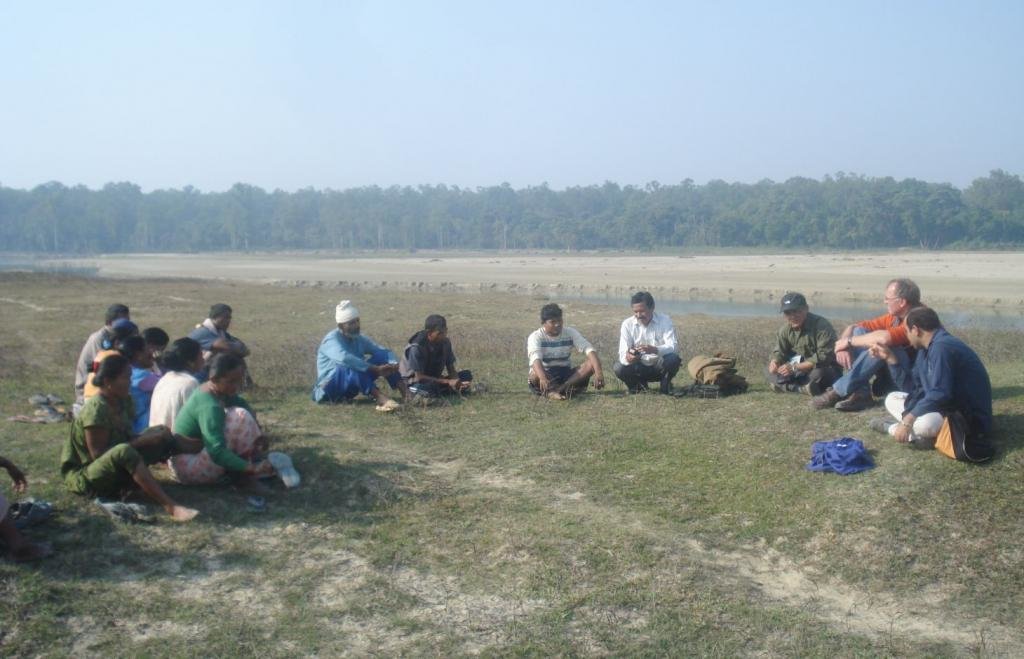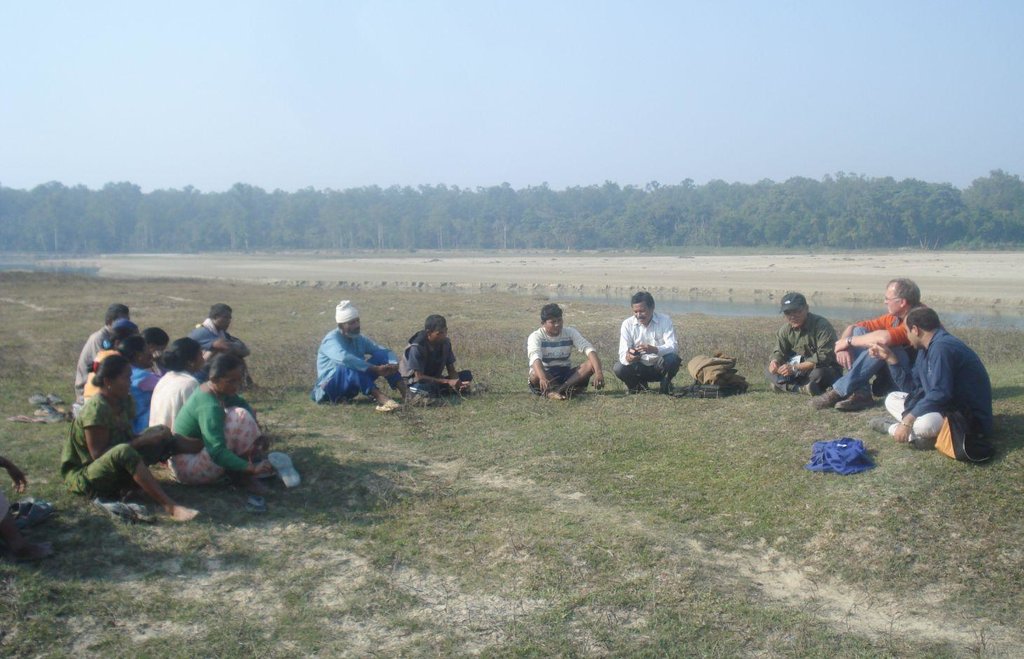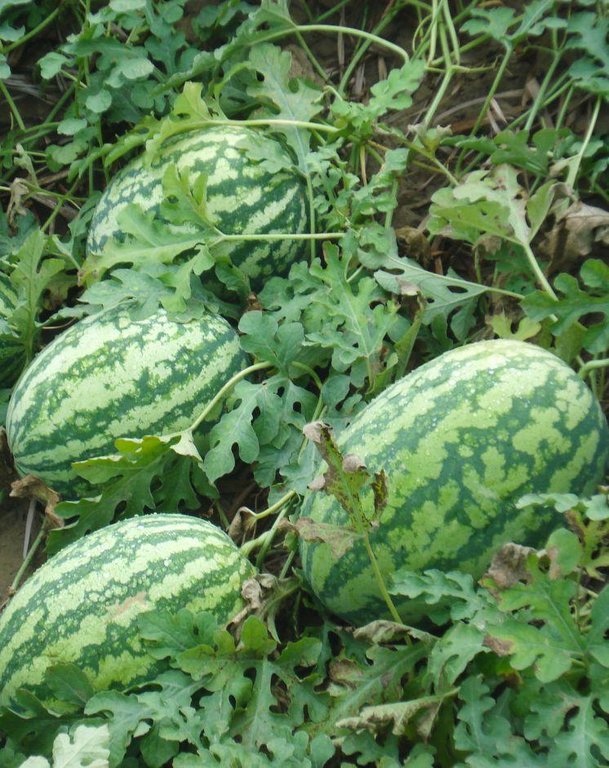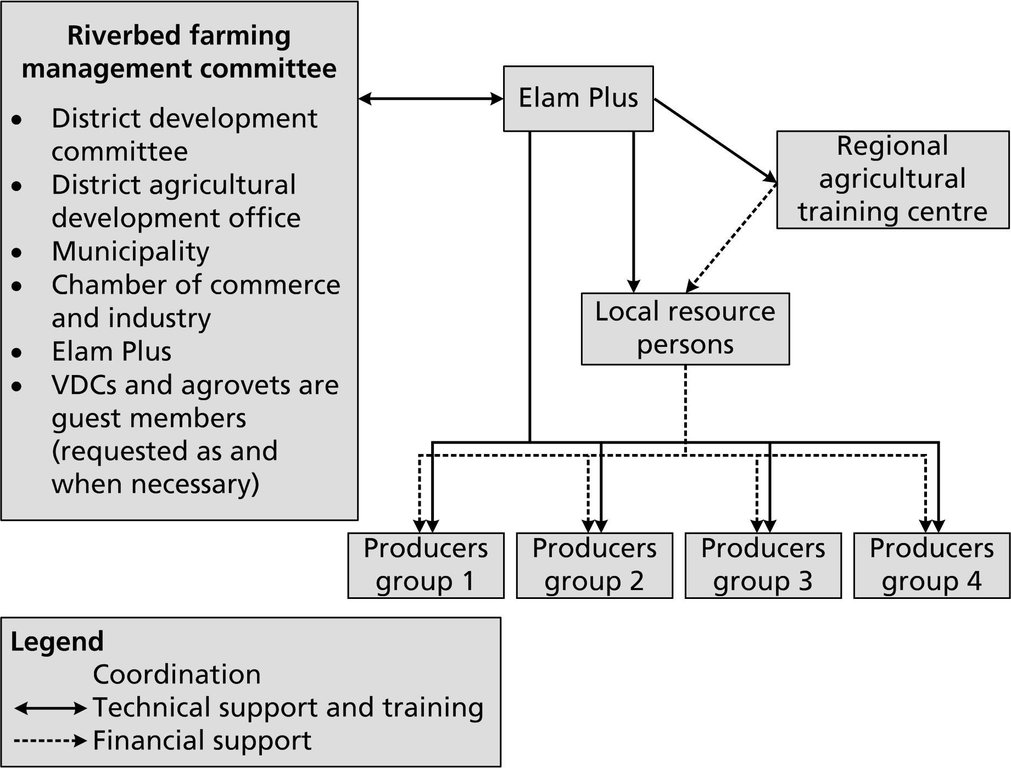Land distribution and allocation for riverbed farming [ເນໂປ]
- ການສ້າງ:
- ປັບປູງ:
- ຜູ້ສັງລວມຂໍ້ມູນ: Shreedip Sigdel
- ບັນນາທິການ: –
- ຜູ້ທົບທວນຄືນ: Fabian Ottiger
Bagare Kheti ko lagi bhumi bitaran ra bhibhajan (Main Contributor: Juerg Merz & Hari Gurung, HELVETAS)
approaches_2534 - ເນໂປ
ເບິ່ງພາກສ່ວນ
ຂະຫຍາຍທັງໝົດ ຍຸບທັງໝົດ1. ຂໍ້ມູນທົ່ວໄປ
1.2 ລາຍລະອຽດ ການຕິດຕໍ່ ຂອງບຸກຄົນທີ່ຊັບພະຍາກອນ ແລະ ສະຖາບັນ ການມີສ່ວນຮ່ວມ ໃນການປະເມີນຜົນ ແລະ ເອກະສານ ຂອງວິທີທາງ
ຜູ້ຊ່ຽວຊານ ດ້ານການຄຸ້ມຄອງ ທີ່ດິນແບບຍືນຍົງ:
Merz Jürg
+977 1 5524925; +977 985104442 (M)
juerg.merz@helvetas.org.np
HELVETAS Swiss Intercooperation Nepal
ສະວິດເຊີແລນ
ຜູ້ຊ່ຽວຊານ ດ້ານການຄຸ້ມຄອງ ທີ່ດິນແບບຍືນຍົງ:
Gurung Hari
+9741056444 (M)
hari.gurung@helvetas.org.np
HELVETAS Swiss Intercooperation Nepal
ເນໂປ
ຊື່ຂອງ ສະຖາບັນການຈັດຕັ້ງ ທີ່ອໍານວຍຄວາມສະດວກ ໃນການສ້າງເອກກະສານ ຫຼື ປະເມີນແນວທາງ (ຖ້າກ່ຽວຂ້ອງ)
HELVETAS (Swiss Intercooperation)ຊື່ຂອງ ສະຖາບັນການຈັດຕັ້ງ ທີ່ອໍານວຍຄວາມສະດວກ ໃນການສ້າງເອກກະສານ ຫຼື ປະເມີນແນວທາງ (ຖ້າກ່ຽວຂ້ອງ)
ICIMOD International Centre for Integrated Mountain Development (ICIMOD) - ເນໂປ1.3 ເງື່ອນໄຂ ຂອງການນໍາໃຊ້ເອກກະສານຂໍ້ມູນ ຂອງ WOCAT
ເມື່ອໃດທີ່ໄດ້ສັງລວມຂໍ້ມູນ (ຢູ່ພາກສະໜາມ)?
01/03/2013
ຜູ້ສັງລວມ ແລະ ບັນດາຜູ້ຕອບແບບສອບຖາມ ຍອມຮັບໃນເງື່ອນໄຂ ການນໍາໃຊ້ຂໍ້ມູນເອກະສານ ທີ່ສ້າງຂື້ນ ໂດຍຜ່ານ ອົງການ WOCAT:
ແມ່ນ
1.4 ເອກະສານອ້າງອີງ (ຫຼາຍ) ກັບແບບສອບຖາມ (ຫຼາຍ) ເຕັກໂນໂລຢີ ຂອງດ້ານການຄຸ້ມຄອງ ດິນແບບຍືນຍົງ
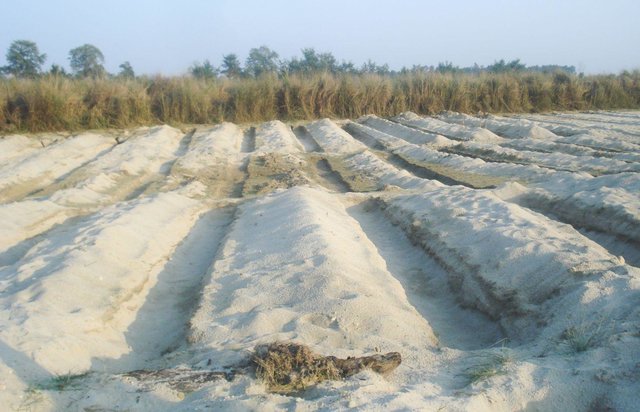
Riverbed farming [ເນໂປ]
Riverbed farming can be used to increase household income and to improve the food security of landless and land-poor households in the Terai area of Nepal.
- ຜູ້ສັງລວມຂໍ້ມູນ: Shreedip Sigdel
2. ພັນລະນາ ແນວທາງການຄຸ້ມຄອງນໍາໃຊ້ດິນແບບຍືນຍົງ
2.1 ການອະທິບາຍ ໂດຍຫຍໍ້ ຂອງວິທີທາງ
Riverbed farming provides landless and land-poor households with the possibility to earn an income from on-farm activities close to home
2.2 ການອະທິບາຍ ລາຍລະອຽດ ຂອງວິທີທາງ
ການອະທິບາຍ ລາຍລະອຽດ ຂອງວິທີທາງ:
Aims / objectives: At least 20% of the households in the Terai, the plains of southern Nepal, do not own land. In order to make a living, these households commonly rely on share cropping and work in low paid off-farm jobs. The approach described here allows these farmers to make the most of the large areas of fallow land near riverbeds which are normally unclaimed and not cultivated. Since the lands near riverbeds have alluvial soils and sufficient moisture, they are suitable for seasonal vegetable cultivation during the dry season. In order for these landless and land-poor households to be able to farm these riverbed areas, they need to have access to suitable plots and the necessary agricultural inputs and training.
Methods: Potential riverbed areas are identified using topographic maps; subsequently, field verification identifies whether the selected riverbed areas are indeed suitable for cultivating horticultural crops. During the field verification, target groups in the given riverbed area are identified and the land is assessed in consultation with them. The relevant stakeholders are the village development committee and the district agricultural development office. Local resource persons are selected from target groups, which typically consist of 20 to 25 households, and are given training so that they can provide the local technical support. Once the farmer target groups have been identified and the riverbed sites selected, the group is given the legal support needed to get a leasehold agreement with the land owner, often the state. The riverbed area is then parcelled out to landless and land-poor households based on fixed selection criteria. This approach works best when the riverbed land area is at least 3 ha because it means that every target household can cultivate at least 0.13 ha (4 kattha), the least amount of land which can provide a meaningful cash income.
2.3 ຮູບພາບຂອງແນວທາງ
2.5 ປະເທດ / ເຂດ / ສະຖານທີ່ບ່ອນທີ່ແນວທາງໄດ້ຖືກນໍາໃຊ້
ປະເທດ:
ເນໂປ
ຂໍ້ມູນເພີ່ມເຕີມຂອງສະຖານທີ່:
Kanchanpur and Kailali District
2.7 ປະເພດຂອງແນວທາງ
- ພາຍໃຕ້ໂຄງການ / ແຜນງານ
2.8 ເປົ້າໝາຍ / ຈຸດປະສົງຫຼັກ ຂອງການຈັດຕັ້ງປະຕິບັດ ວິທີທາງ
The Approach focused mainly on SLM with other activities (income generation of poor and landless household)
Give landless and land-poor households access to riverbed land for cash crop cultivation so that they can increase their household income and their food security
The SLM Approach addressed the following problems: • A high number of landless and land-poor households subsist on share cropping and low paid off-farm work
• The number of landless and land-poor households is increasing because many farmers have lost their agricultural land due to floods, many hill farmers are migrating to the Terai, and an increasing population means that holdings are divided up into ever smaller plots
• Inadequate agricultural extension for riverbed farming
• There are no local level policies which allow landless and land-poor farmers access to marginal lands
2.9 ເງື່ອນໄຂອໍານວຍ ຫຼື ຂັດຂວາງການປະຕິບັດຂອງເຕັກໂນໂລຢີ / ເຕັກໂນໂລຢີການນໍາໃຊ້ຕາມແນວທາງ
ການກໍ່ຕັ້ງສະຖາບັນ
- ເຊື່ອງຊ້ອນ
The government's extension service does not cover riverbed farming
Treatment through the SLM Approach: Local resource persons are trained and mobilized to provide agricultural extension services to riverbed farmers.
ກ່ຽວກັບກົດໝາຍ (ສິດນໍາໃຊ້ດິນ, ສິດນໍາໃຊ້ນໍ້າ)
- ເຊື່ອງຊ້ອນ
Riverbeds are generally owned by the state (village development committee, municipality, or community forest users' groups) and in some cases, by private owners. The owners are reluctant to provide access to the riverbed land because of the Tenant Law. About 65% of the riverbed land is owned by the state and the rest is privately owned. Individual land right issues are discussed in the group and negotiated among group members. Generally, the choice of crops for riverbed farming depends on the type of soil and the sand moisture level; attempts are made to minimize the amount of river water used. So far, downstream farmers have not complained about any overuse of water by upstream riverbed farmers. In this regard, water rights issues are not generally raised.
Treatment through the SLM Approach: Farmers and land owners agree on a 3-year lease for riverbed land. The land is allocated according to the size of the group, the size of the land, and its location relative to the river. Each member is allocated 4 katthas (0.13 ha) perpendicular to the river flow.
A border is determined and the area is guarded at night.
ຄວາມຮູ້ກ່ຽວກັບການຄຸ້ມຄອງ ທີ່ດິນແບບຍືນຍົງ, ການເຂົ້າເຖິງການສະໜັບສະໜູນ ທາງດ້ານວິຊາການ
- ເຊື່ອງຊ້ອນ
Seeds for crops which are suitable for riverbed farming generally come from India and the local agrovets often cannot supply them on time.
Treatment through the SLM Approach: Agrovets are informed about the type of agricultural inputs needed (seeds, fertilizers, bio-pesticides) and how to supply them. Riverbed farmers are trained on how to use local and improved seeds and how to conserve and store them.
ອື່ນໆ
- ເຊື່ອງຊ້ອນ
Unclear government policies may limit access to riverbed land and subsidies from poverty alleviation programmes
Treatment through the SLM Approach: Lobby local bodies to address issues of riverbed farming policies
3. ການມີສ່ວນຮ່ວມ ແລະ ບົດບາດຂອງພາກສ່ວນທີ່ກ່ຽວຂ້ອງທີ່ໄດ້ມີສ່ວນຮ່ວມ
3.1 ຜູ້ມີສ່ວນຮ່ວມ ໃນວິທີທາງ ແລະ ພາລະບົດບາດ ຂອງເຂົາເຈົ້າ
- ຜູ້ນໍາໃຊ້ດິນໃນທ້ອງຖິ່ນ / ຊຸມຊົນທ້ອງຖິ່ນ
- ຜູ້ຊ່ຽວຊານ ການນຄຸ້ມຄອງ ທີ່ດິນແບບຍືນຍົງ / ທີ່ປຶກສາດ້ານກະສິກໍາ
- ອົງການຈັດຕັ້ງ ທີ່ບໍ່ຂື້ນກັບລັດຖະບານ
Elam Plus
- ພະນັກງານຂັ້ນສູນກາງ (ຜູ້ວາງແຜນ, ຜູ້ສ້າງນະໂຍບາຍ)
3.2 ການມີສ່ວນຮ່ວມຂອງຜູ້ນໍາໃຊ້ທີ່ດິນໃນທ້ອງຖິ່ນ / ຊຸມຊົນທ້ອງຖິ່ນໃນໄລຍະທີ່ແຕກຕ່າງກັນຂອງແນວທາງ
| ການລວບລວມ ເອົາຜູ້ນໍາໃຊ້ດິນ ໃນທ້ອງຖິ່ນ / ຊຸມຊົນທ້ອງຖິ່ນ | ໃຫ້ລະບຸ ຜູ້ໃດທີ່ມີສ່ວນຮ່ວມ ໃນແຕ່ລະກິດຈະກໍາ? | |
|---|---|---|
| ການເລີ່ມຕົ້ນ / ແຮງຈູງໃຈ | ການຮ່ວມມື | Group meeting conducted with key members of a group, request for follow-up forwarded to supporting organization. |
| ການວາງແຜນ | ການຮ່ວມມື | The riverbed area is selected and the land is distributed to the members. The arrangements are agreed in consultation with both men and women of the producer group. |
| ການປະຕິບັດ | ການນໍາໃໍຊ້ເອງ | Land preparation, sowing, irrigation, weeding, harvesting, and marketing. Both men and women are involved. |
| ຕິດຕາມກວດກາ / ການປະເມີນຜົນ | ການຮ່ວມມື | The process of requesting access to the riverbed land involves group level discussions between farmers and government officials or land owners. Key members of the group (e.g. chair person or secretary) are involved in monitoring and evaluating the success of the riverbed farming programme. |
| Research | ການຮ່ວມມື | Farmers pilot crop innovations based on the research design suggested by supporting organizations and they provide feedback on how successful the implementation was. |
3.3 ແຜນວາດ (ຖ້າມີ)
ການອະທິບາຍ:
committee:
• Organize, review, and plan meetings
• Decide on suppliers
• Oversee the land lease process and insure that the land is properly allocated
• Conduct field monitoring
Role of Elam Plus:
• Organize stakeholders' meetings for managing and generating resources
• Funding support
• Introduce innovations
• Train local resource persons
Role of local resource persons:
• Provide technical support to farmers
• Support producers groups to maintain records and bookkeeping
• Support producers groups to find market linkages
Role of Regional Agricultural Training Centre:
• Develop modular training package
• Train local resource persons
(AK Thaku)
3.4 ການຕັດສິນໃຈກ່ຽວກັບການຄັດເລືອກເຕັກໂນໂລຢີຂອງການຄຸ້ມຄອງທີ່ດິນແບບຍືນຍົງ / ເຕັກໂນໂລຢີ
ລະບຸ ຄົນທີ່ຕັດສິນໃຈ ກ່ຽວກັບການຄັດເລືອກຂອງ ເຕັກໂນໂລຢີ / ເຕັກໂນໂລຢີ ຈະໄດ້ຮັບການປະຕິບັດ:
- ຜູ້ນໍາໃຊ້ທີ່ດິນຫຼັກ, ການສະໜັບສະໜູນ ໂດຍຜູ້ຊ່ຽວຊານ ການນໍາໃຊ້ທີ່ດິນແບບຍືນຍົງ
ອະທິບາຍ:
Farm coordinators consult with the Elam Plus team, the District Agricultural Development Office, local resource persons, and producers groups to come up with a mutually agreed technology.
Decisions on the method of implementing the SLM Technology were made by mainly by land users supported by SLM specialists. Producers groups and local resource persons work in close collaboration with farm coordinators and the enterprise development officers of Elam Plus.
4. ການສະໜັບສະໜູນທາງດ້ານວິຊາການ, ການສ້າງຄວາມສາມາດ, ແລະ ການຈັດການຄວາມຮູ້.
4.1 ການສ້າງຄວາມສາມາດ / ການຝຶກອົບຮົມ
ຜູ້ນໍາໃຊ້ທີ່ດິນ ຫຼື ພາກສ່ວນກ່ຽວຂ້ອງອື່ນໆ ໄດ້ຮັບການຝຶກອົບຮົມບໍ່?
ແມ່ນ
ໃຫ້ລະບຸ ຜູ້ໃດທີ່ໄດ້ຮັບການຝຶກອົບຮົມ:
- ພະນັກງານພາກສະໜາມ / ທີ່ປຶກສາ
ຮູບແບບຂອງການຝຶກອົບຮົມ:
- Technical training and extension services
ໃນຫົວຂໍ້:
The Regional Agricultural Training Centre of the Department of Agriculture trains the local resource persons. Once trained, they help to raise awareness among landless and land-poor farmers of the advantages of riverbed farming and they also give them technical training and extension services
4.2 ການບໍລິການໃຫ້ຄໍາປຶກສາ
ເຮັດຜູ້ໃຊ້ທີ່ດິນມີການເຂົ້າເຖິງການບໍລິການໃຫ້ຄໍາປຶກສາ?
ແມ່ນ
ລະບຸວ່າການສະໜອງ ການບໍລິການ ໃຫ້ຄໍາປຶກສາ:
- ໃນພື້ນທີ່ຂອງຜູ້ນໍາໃຊ້ດິນ
ອະທິບາຍ / ຄວາມຄິດເຫັນ:
Name of method used for advisory service: Training; Key elements: The District Agricultural Development Office provides plant protection expertise and Elam Plus provides technical backstopping and field learning.
4.3 ສະຖາບັນການສ້າງຄວາມເຂັ້ມແຂງ (ການພັດທະນາອົງການຈັດຕັ້ງ)
ສະຖາບັນ ໄດ້ຮັບການສ້າງຕັ້ງຂື້ນ ຫຼື ໄດ້ຮັບການສ້າງຄວາມເຂັ້ມແຂງ ໂດຍການຈັດຕັ້ງປະຕິບັດ ວິທີທາງບໍ່?
- ມີ, ພໍສົມຄວນ
ລະບຸ ທາງສະຖາບັນ ໄດ້ສ້າງຄວາມເຂັ້ມແຂງ ໃນລະດັບໃດ (ຫຼາຍ):
- ທ້ອງຖິ່ນ
ລະບຸ ປະເພດ ຂອງສະໜັບສະໜູນ:
- ການສ້າງຄວາມອາດສາມາດ / ການຝຶກອົບຮົມ
ໃຫ້ລາຍລະອຽດເພີ່ມເຕີມ:
Local resource persons form their own organizations and their capacity is strengthened.
4.4 ຕິດຕາມກວດກາ ແລະ ປະເມີນຜົນ
ການຈັດຕັ້ງປະຕິບັດ ວິທີທາງ ໄດ້ມີການປະເມີນຜົນ ແລະ ຕິດຕາມບໍ?
ແມ່ນ
ຄວາມຄິດເຫັນ:
technical aspects were monitored through measurements; indicators: In total, 35 local resource persons were trained and mobilized in Kailali and Kanchanpur Districts.
socio-cultural aspects were monitored through observations; indicators: Riverbed farming indirectly reduces outmigration and the need for farmers to seek off-farm employment like collecting and cutting fuelwood and other seasonal labour.
economic / production aspects were monitored through measurements; indicators: On average, households can earn USD 352 (NPR 25,000) in 6 months from 0.13 ha (4 katthas) of land.
area treated aspects were monitored through measurements; indicators: In 2011, a total area of 396 ha was under riverbed cultivation with support from Elam Plus in Kailali and Kanchanpur.
no. of land users involved aspects were monitored through measurements; indicators: In 2011, about 3,000 landless and land-poor households were involved in 122 riverbed farming areas. The number of households increased from 2000 in 2008 to 3165 in 2012.
management of Approach aspects were monitored through observations; indicators: Management of the riverbed farming programme is handled by Elam Plus. The riverbed farming management committee plays an active role in co-ordinating fund contributions from stakeholders for input purchases, organizing planning and review meetings, conducting joint field monitoring, and other relate
4.5 ການຄົ້ນຄວ້າ
ນີ້້ແມ່ນສ່ວນໜຶ່ງ ການຄົ້ນຄວ້າ ຂອງວິທີທາງບໍ່?
ແມ່ນ
ລະບຸ ຫົວຂໍ້:
- ເຕັກໂນໂລຢີ
ໃຫ້ຂໍ້ມູນ ເພີ່ມເຕີມ ແລະ ກໍານົດ ຜູ້ໃດເຮັດການຄົ້ນຄວ້າ:
Innovations, such as piloting new crops, selecting appropriate varieties, and trying out new cultivation techniques are activities supported by Elam Plus through regular communication with the local resource persons.
Research was carried out both on station and on-farm
5. ການສະໜັບສະໜູນທາງດ້ານການເງິນ ແລະ ອຸປະກອນຈາກພາຍນອກ
5.1 ງົບປະມານປະຈໍາປີ ສໍາລັບວິທີທາງ ຂອງການຄຸ້ມຄອງ ທີ່ດິນແບບຍືນຍົງ
ຄໍາເຫັນ (ຕົວຢ່າງ: ແຫຼ່ງຂໍ້ມູນຫຼັກ ຂອງການສະໜອງທຶນ / ຜູ້ໃຫ້ທຶນທີ່ສໍາຄັນ):
Approach costs were met by the following donors: national non-government (Producer's Group): 40.0%; other: 60.0%
5.2 ການສະໜັບສະໜູນ ທາງດ້ານການເງິນ / ອຸປະກອນ ສະໜອງໃຫ້ແກ່ຜູ້ນໍາທີ່ດິນ
ຜູ້ນໍາໃຊ້ດິນ ໄດ້ຮັບການສະໜັບສະໜູນ ທາງດ້ານ ການເງິນ / ອຸປະກອນ ໃນການຈັດຕັ້ງປະຕິບັດ ເຕັກໂນໂລຢີບໍ?
ແມ່ນ
5.3 ເງິນສົມທົບສໍາລັບການນໍາໃຊ້ສະເພາະປັດໃຈຂາເຂົ້າໃນການຜະລີດກະສິກໍາ (ລວມທັງແຮງງານ)
- ກະສິກໍາ
| ໃຫ້ລະບຸໄດ້ຮັບການສະໜັບສະໜູນປັດໃຈຂາເຂົ້າຫຍັງແດ່ | ທີ່ຂອບເຂດ | ລະບຸ ການອຸດໜູນ |
|---|---|---|
| ແນວພັນ, ແກ່ນພັນ | ງົບປະມານບາງສ່ວນ | |
- ອື່ນໆ
| ອື່ນໆ (ລະບຸ) | ທີ່ຂອບເຂດ | ລະບຸ ການອຸດໜູນ |
|---|---|---|
| ງົບປະມານບາງສ່ວນ | In the first year, USD 331 (NPR 23,531) worth of inputs are provided by the supporting organizations. In the second year, only 50% is provided, mainly to cover the cost of the seeds. In the third year, only 50% of the cost for the services of the local resource persons and market linkage support are provided. |
ຖ້າແຮງງານ ຂອງຜູ້ນໍາໃຊ້ດິນ ໄດ້ຮັບການສະໜັບສະໜູນ ປັດໃຈຂາເຂົ້າ, ແມ່ນບໍ່:
- ການອາສາ
ຄວາມຄິດເຫັນ:
Labour is provided by the farmer groups themselves costing an equivalent of USD 213 (NPR 15,100) per hectare.
5.4 ສິນເຊື່ອ
ໄດ້ປ່ອຍສິນເຊື່ອ ສະໜອງໃຫ້ພາຍໃຕ້ ວິທີການສໍາລັບກິດຈະກໍາ ການຄຸ້ມຄອງ ທີ່ດິນແບບຍືນນຍົງບໍ່?
ແມ່ນ
ເງື່ອນໄຂກໍານົດ (ອັດຕາດອກເບ້ຍ, ຈ່າຍຄືນ, ແລະ ອື່ນໆ) :
No credit was extended for riverbed farming, but the groups have initiated their own savings schemes. These group funds can be used for loans to purchase the required inputs.
6. ວິເຄາະຜົນກະທົບ ແລະ ສັງລວມບັນຫາ
6.1 ຜົນກະທົບຂອງແນວທາງ
ການຈັດຕັ້ງປະຕິບັດ ວິທີທາງ ສາມາດຊ່ວຍຜູ້ນໍາໃຊ້ທີ່ດິນ ໃນການຈັດຕັ້ງປະຕິບັດ ແລະ ບໍາລຸງຮັກສາ ເຕັກໂນໂລຢີ ການຄຸ້ມຄອງ ທີ່ດິນແບບຍືນຍົງໄດ້ບໍ?
- ບໍ່
- ມີ, ໜ້ອຍໜຶ່ງ
- ມີ, ພໍສົມຄວນ
- ມີ, ຫຼາຍ
Previously underutilized land resources are productively used for vegetable production and income generation. When farmers use organic methods, the impact on the river ecology is minimal.
ການຈັດຕັ້ງປະຕິບັດ ວິທີທາງ ສາມາດສ້າງຄວາມເຂັ້ມແຂງ ທາງສັງຄົມ ແລະ ເສດຖະກິດບໍ່?
- ບໍ່
- ມີ, ໜ້ອຍໜຶ່ງ
- ມີ, ພໍສົມຄວນ
- ມີ, ຫຼາຍ
The vegetable consumption of disadvantaged groups has improved. In addition, they also earned cash from riverbed farming that they spent to purchase education, health care, and food grain.
Did other land users / projects adopt the Approach?
- ບໍ່
- ມີ, ໜ້ອຍໜຶ່ງ
- ມີ, ພໍສົມຄວນ
- ມີ, ຫຼາຍ
Other groups and projects have started to replicate riverbed farming in their own areas by imitating what they have observed of groups working with Elam Plus.
Did the Approach lead to improved livelihoods / human well-being?
- ບໍ່
- ມີ, ໜ້ອຍໜຶ່ງ
- ມີ, ພໍສົມຄວນ
- ມີ, ຫຼາຍ
Households earned on average USD 352, or NPR 25,000, per household from 0.13 ha of land. Locally traded, this is equivalent to four months' worth of additional food grain.
Did the Approach help to alleviate poverty?
- ບໍ່
- ມີ, ໜ້ອຍໜຶ່ງ
- ມີ, ພໍສົມຄວນ
- ມີ, ຫຼາຍ
Cash income from the sale of riverbed farming produce helped to alleviate poverty to some extent.
6.2 ແຮງຈູງໃຈຫຼັກຂອງຜູ້ນໍາໃຊ້ທີ່ດິນໃນການປະຕິບັດການຄຸ້ມຄອງທີ່ດິນແບບຍືນຍົງ
- ການຜະລິດເພີ່ມຂຶ້ນ
- well-being and livelihoods improvement
6.3 ຄວາມຍືນຍົງຂອງກິດຈະກໍາວິທີທາງ
ຜູ້ນໍາໃຊ້ ທີ່ດິນ ສາມາດສືບຕໍ່ ການຈັດຕັ້ງປະຕິບັດ ຜ່ານວິທີທາງໄດ້ບໍ່ (ໂດຍປາດສະຈາກ ການຊ່ວຍເຫຼືອ ຈາກພາກສ່ວນພາຍນອກ)?
- ແມ່ນ
ຖ້າ ໄດ້, ອະທິບາຍເຫດຜົນ:
The local stakeholders in the riverbed farming approach are committed to providing funds and to being actively involved in reviews, planning, and joint field monitoring. Riverbed farmers have gained basic know-how, and trained local resource persons are available to help at the local level if needed. The Micro Enterprise Development Fund now has a presence in the district and producers can access support from them for riverbed farming. Farmers' groups have already organized savings schemes that can be used to purchase the required agricultural inputs. The majority of farmers continued riverbed farming beyond the third crop and many made a significant income. Riverbed farming has a negligible negative impact on the environment. When all of these factors are considered, riverbed farming is indeed a sustainable activity.
6.4 ຈຸດແຂງ / ຂໍ້ດີ ຂອງວິທີທາງ
| ຈຸດແຂງ / ຈຸດດີ / ໂອກາດ ຈາກທັດສະນະຂອງຜູ້ປ້ອນຂໍ້ມູນ ຫຼື ບຸກຄົນສຳຄັນ |
|---|
| Marketing facilitators have been developed in each group. (How to sustain/ enhance this strength: Capacity building of the marketing facilitators needs further attention.) |
| Local agrovets are available and they have the capacity to provide the right inputs. (How to sustain/ enhance this strength: Local agrovets need to be aware of the needs of this new type of farming in order to ensure timely inputs.) |
| Local government stakeholders are positive about riverbed farming and the current level of coordination from Elam Plus is appreciated. (How to sustain/ enhance this strength: This needs a model so that it can be institutionalized and replicated in other areas.) |
| Trained resource persons who can provide extension services are available locally. (How to sustain/ enhance this strength: The local resource persons need to be linked with the Micro Enterprise Development Fund and their services need to be diversified to include aspects all along the market chain.) |
| Groups have mobilized their savings funds to purchase inputs. (How to sustain/ enhance this strength: Encourage the formation of savings and credit groups.) |
| Riverbed farming increases household income. (How to sustain/ enhance this strength: Market-led production should be further promoted.) |
| Village development committees have to become involved in the land leasing process. (How to sustain/ enhance this strength: Develop policies related to land leasing.) |
6.5 ຈຸດອ່ອນ / ຂໍ້ເສຍຂອງແນວທາງ ແລະ ວິທີການແກ້ໄຂໃຫ້ເຂົາເຈົ້າ
| ຈຸດອ່ອນ ຫຼື ຂໍ້ເສຍ ຫຼື ຄວາມສ່ຽງ ໃນມຸມມອງຂອງ ຜູ້ສັງລວມຂໍ້ມູນ ຫຼື ບັນດາຜູ້ຕອບແບບສອບຖາມ | ມີວິທີການແກ້ໄຂຄືແນວໃດ? |
|---|---|
| Currently riverbed farming producer groups are scattered and their production is limited. | Production needs be market-led and farmers should have better links to markets. |
| Riverbed farming is supported on a case-to-case basis by line agencies and non-governmental organizations. | The Ministry of Local Development can develop a riverbed farming policy to ensure that landless and land-poor farmers have access to riverbed lands |
7. ເອກກະສານອ້າງອີງ ແລະ ຂໍ້ມູນການເຊື່ອມໂຍງ
7.1 ວິທີການ / ແຫຼ່ງຂໍ້ມູນ
- ການໄປຢ້ຽມຢາມພາກສະໜາມ, ການສໍາຫຼວດພາກສະໜາມ
- ການສໍາພາດ ຜູ້ນໍາໃຊ້ທີ່ດິນ
ຂໍ້ມູນການເຊື່ອມຕໍ່ ແລະ ເນື້ອໃນ
ຂະຫຍາຍທັງໝົດ ຍຸບທັງໝົດການເຊື່ອມຕໍ່

Riverbed farming [ເນໂປ]
Riverbed farming can be used to increase household income and to improve the food security of landless and land-poor households in the Terai area of Nepal.
- ຜູ້ສັງລວມຂໍ້ມູນ: Shreedip Sigdel
ເນື້ອໃນ
ບໍ່ມີເນື້ອໃນ


